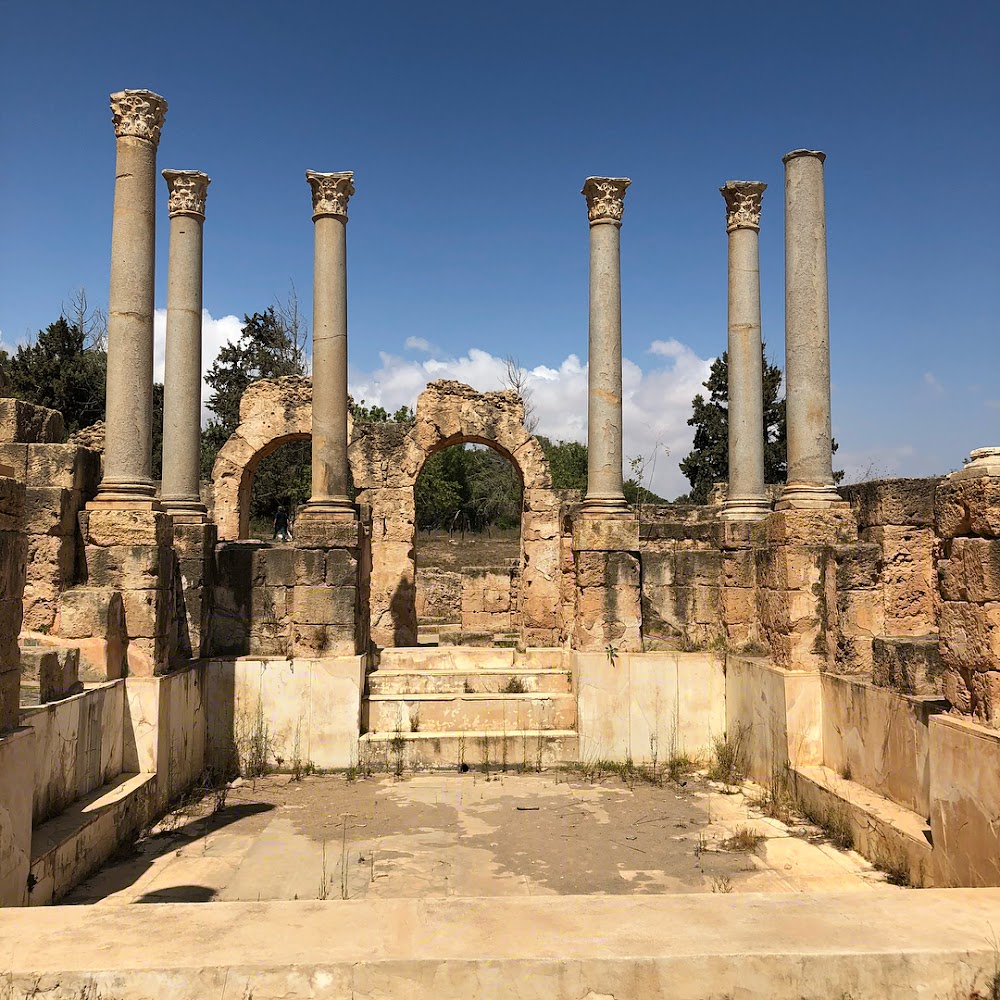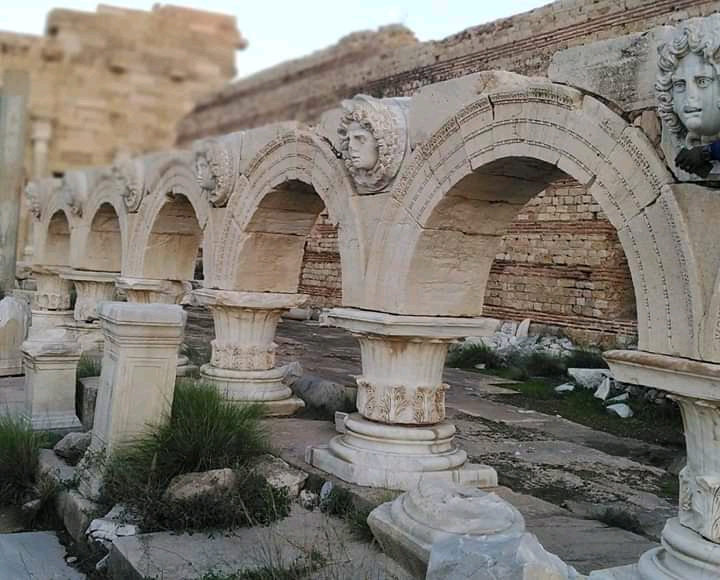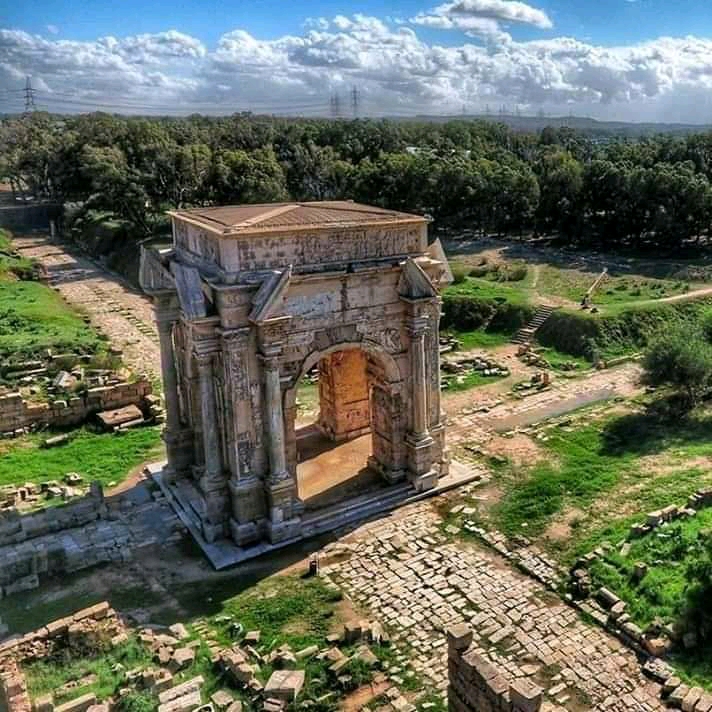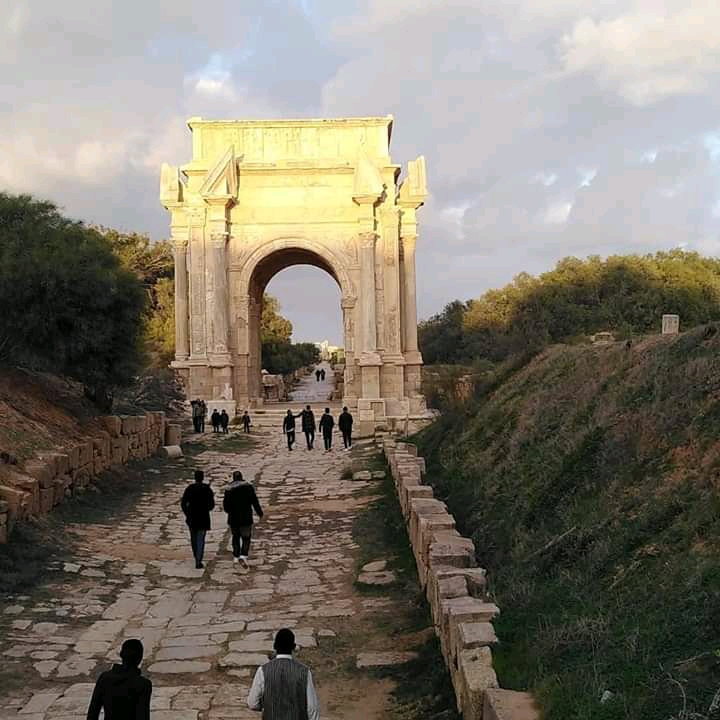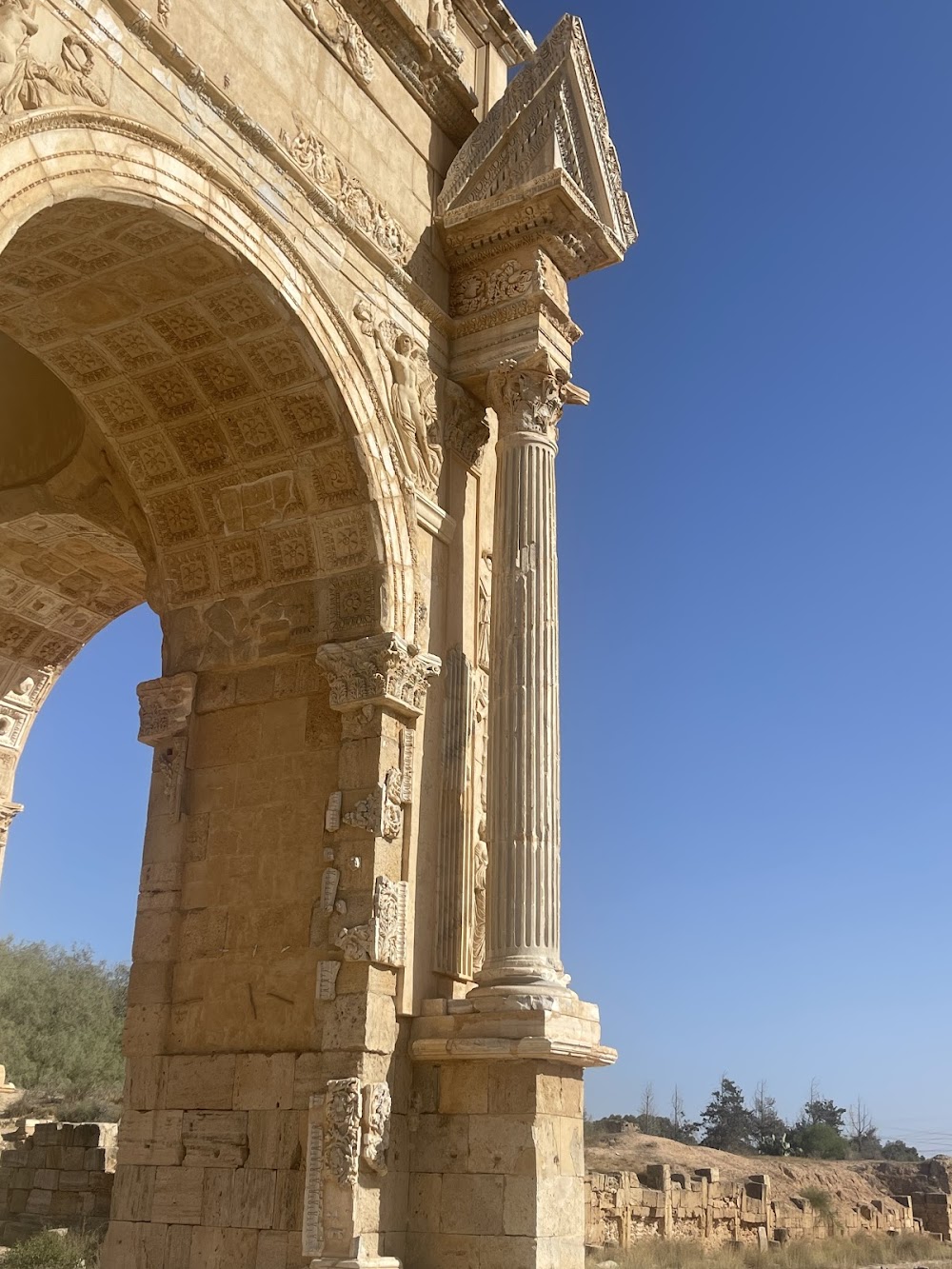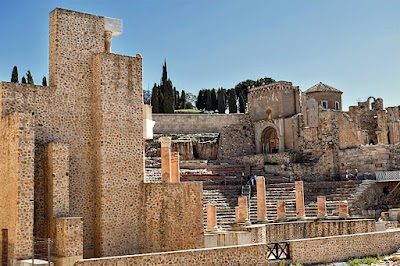Theatre of Leptis Magna (مسرح لبدة)
Overview
The Arch of Tiberius is a remarkable historical monument nestled in the ancient city of Leptis Magna, located in the Murqub district of present-day Libya. This imposing and elegant structure stands as a testament to the architectural and engineering prowess of the Roman Empire.
Constructed around the early 1st century AD during the reign of Emperor Tiberius, the arch was designed to commemorate his victories and achievements. It also served as a grand entrance to the theatre of Leptis Magna, a city of significant importance in the Roman Empire due to its strategic location and vibrant trade activities. Under various Roman emperors, Leptis Magna underwent substantial development, with notable contributions made during Tiberius's rule.
The design of the Arch of Tiberius exemplifies traditional Roman architectural principles. It features a single, towering arched passage flanked by decorative columns, which not only provide structural support but also enhance the aesthetic appeal of the monument. These columns are adorned with intricate carvings and relief work, while detailed friezes and inscriptions above the archway celebrate the emperor and his accomplishments.
Crafted primarily from local limestone and sandstone, the arch showcases the skill and precision of Roman stone masons. The craftsmen meticulously cut and shaped the stones to fit together without mortar, demonstrating their expertise. Additionally, decorative elements like marble adorn the surface, bestowing the structure with both beauty and durability.
One of the most captivating features of the Arch of Tiberius is its relief decorations. These carvings depict scenes of Roman military victories, mythological tales, and the emperor's benevolence, all intended to convey the power and divine favor bestowed upon the Roman state. The attention to detail in these reliefs is extraordinary, with lifelike representations that have endured centuries of weathering.
Strategically positioned at the entrance of the theatre, the arch played a vital role in the daily life of Leptis Magna's citizens. It was often one of the first structures visitors encountered, symbolizing a gateway to Roman culture and entertainment. The theatre hosted a variety of performances, including dramas, musical acts, and public gatherings, further solidifying the arch's importance in the social and cultural fabric of the city.
Over the centuries, the Arch of Tiberius has faced the ravaging effects of time and human activity. Yet, it remains a standing testament to the glory days of the Roman Empire in North Africa. Thanks to the efforts of modern archaeologists and historians, parts of the arch have been preserved and restored, offering contemporary visitors a glimpse into the past.
Today, the Arch of Tiberius in Leptis Magna is a celebrated historical landmark, attracting tourists and scholars from around the world. Its existence provides invaluable insights into Roman architecture, culture, and the daily lives of the city’s ancient inhabitants. Standing before this grand structure, one cannot help but feel a sense of awe and appreciation for the ingenuity and artistic vision of its creators.


